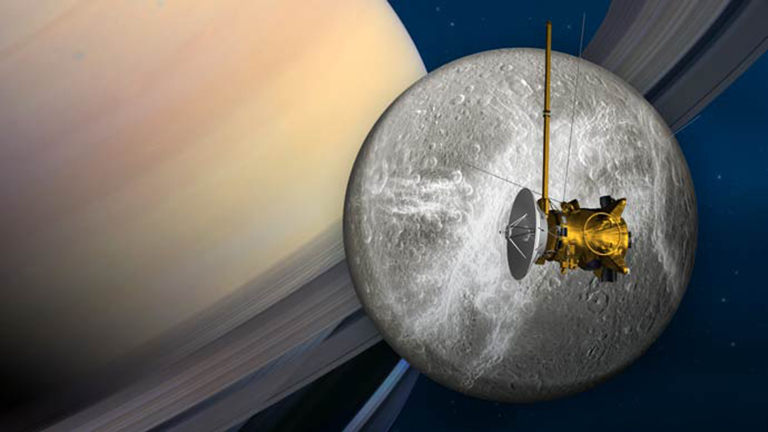News | June 15, 2015
Dione Flyby (D-4) - June 16, 2015

Cassini's penultimate encounter with Saturn's moon Dione is slated for June 16.
Close-up views of wispy streaks and searching for signs of activity
During this flyby, Cassini’s cameras and spectrometers will map the sub-Saturn part of the trailing side of Dione -- that is, the part of the moon's trailing hemisphere that faces Saturn. This observation includes the tectonically deformed terrain named "Eurotas Chasmata," first observed 35 years ago by the Voyager mission as bright, wispy streaks. Cassini will also try to detect and determine the composition of fine particles possibly being emitted from Dione, an indication of geologic activity at a low level. The radio science team will use this flyby to improve our knowledge of Dione's gravitational field, internal structure, and the rigidity of its outer ice shell. After close approach the Composite Infrared Mapping Spectrometer (CIRS) will map the moon's dark side to understand how Dione's surface loses heat.


